In business management, organizational charts are pivotal in illustrating a company's intricate web of structure, hierarchy, and relationships. This introduction aims to provide a brief overview of the essential function of business organizational charts, emphasizing their visual representation of the internal framework.
Understanding and creating business organizational chart examples are critical aspects that contribute significantly to the success of a business. This section will outline the importance of delving into these visual depictions to enhance comprehension and foster efficient organizational dynamics. Continue reading below to learn more.
In this article
Components and Types of Business Organizational Charts
In navigating the intricacies of business structures, examples of an organizational chart in business serve as indispensable tools, providing a visual roadmap to the organizational hierarchy. This section delves into the essential components and varied types that constitute these charts.
Core Components
In constructing business organizational charts, clarity and precision are paramount. Now, let's delve into the organizational chart's essential components.
- Positions
- Roles
- Departments
These represent specific job titles or functions within the organization, forming the foundational building blocks of the organizational chart.
Each position is associated with distinct roles, outlining individuals' specific responsibilities and duties. This adds granularity to the organizational structure.
Departments group positions and roles into broader functional units, offering a more organized and comprehensive view of the business structure.
The contribution to clarity is paramount in constructing business organizational chart examples that offer a clear representation of the business. When comprehensively understood, positions, roles, and departments collectively contribute to a nuanced and easily understandable visual depiction of the organizational structure.
This clarity, in turn, fosters effective communication and collaboration within the organization. The transparent representation of positions and their associated roles within various departments ensures a holistic view of the internal dynamics. This holistic understanding facilitates smoother interactions among team members and promotes collaborative efforts, aligning the organization towards its common objectives.
Types of Charts
Various business organizational charts exist, each offering a distinct perspective on an organization's structure and communication flow.
- Hierarchical Organizational Chart
- Matrix Organizational Chart
- Flat Organizational Chart
This traditional chart depicts a clear chain of command with a single leader at the top, followed by various levels of management and staff beneath. It is ideal for businesses with a well-defined and centralized structure where authority and decision-making flow from the top down. It is effective for clearly delineating reporting relationships.
This chart integrates vertical and horizontal reporting structures, where employees often report to both functional and project managers simultaneously. This chart type suits organizations with complex projects or multiple lines of authority. It encourages collaboration and flexibility but requires effective communication and coordination.
This chart minimizes hierarchical levels, promoting a more egalitarian structure with fewer layers between top management and employees. It is well-suited for smaller, innovative businesses or startups where quick decision-making and open communication are crucial. It fosters a sense of autonomy among employees.
Real-world Examples of Business Organizational Charts
This section delves into real-world examples of an organizational chart in business. By examining concrete instances from diverse industries, we aim to illuminate how these charts manifest in actual organizational structures.
Showcasing Business Organizational Structures
1. Small Businesses
This business organizational chart might have a simple structure in a small consulting firm. The founder or owner holds the central position, overseeing two key departments - Consulting Services and Business Development. Each department consists of a handful of consultants and support staff. This flat structure allows for quick decision-making and direct communication channels.
Small businesses often favor streamlined structures to enhance agility. This example highlights a centralized leadership role focusing on core functions, enabling close collaboration among team members due to the limited hierarchy.
2. Corporate Organizational Chart
In a multinational corporation, the organizational chart can be more complex. The CEO sits at the top, with multiple layers of management below, including Vice Presidents overseeing various divisions such as Marketing, Finance, and Operations. Each division further branches into departments, creating a hierarchical structure.
Corporations often require a more formalized structure to manage large-scale operations. The clear hierarchy in this example indicates a delineation of responsibilities, making it suitable for managing a diverse range of functions and large teams.
3. Startup Organizational Chart
In a tech startup, the founder may serve as the CEO, directly managing Product Development, Marketing, and Operations. The team is cross-functional, with members contributing to multiple areas. The structure is dynamic, allowing for rapid adaptation to changing needs.
Startups often adopt flexible structures to accommodate the evolving nature of their work. This example showcases a more fluid organization where individuals wear multiple hats, promoting collaboration and innovation.
4. Nonprofit Organizational Chart
The Executive Director oversees Programs, Fundraising, and Administration in a nonprofit organization. Each department further breaks down into specific projects or initiatives, reflecting a mission-driven structure.
Nonprofits often emphasize a mission-driven structure where departments align with specific objectives. This example highlights a focused approach to achieving the organization's goals.
Leveraging EdrawMind for Business Organizational Chart Creation
Creating clear and visually appealing organizational charts is crucial for effective communication and streamlined operations in the ever-evolving business organization landscape. In this section, we explore the utilization of EdrawMind as a powerful tool for crafting dynamic and professional business organizational charts.
Introduction to EdrawMind
EdrawMind is a formidable tool in business organizational chart creation, offering a seamless and efficient approach to visualizing internal structures. With an emphasis on user-friendliness, EdrawMind has become a go-to solution for businesses aiming to communicate their organizational hierarchies with clarity and precision.
EdrawMind's intuitive design features provide a collaborative space for teams to collectively conceptualize and refine organizational ch arts. As we explore the functionalities of EdrawMind, it becomes evident that this tool has not only adapted to the evolving needs of businesses but has also set a new standard for creating dynamic and visually appealing organizational charts in today's fast-paced and visually-driven business environment.
How to Make a Business Organizational Chart
Navigating the complexities of business structures is a critical task, and a well-crafted organizational chart serves as a visual compass for effective communication and streamlined operations. In this step-by-step guide, we explore the power of EdrawMind, a versatile tool designed to simplify the creation of business organizational charts.
Step1Access EdrawMind

Begin by accessing the EdrawMind platform through the web-based application or downloading the software based on your preferred mode.
Step2Start a New Chart
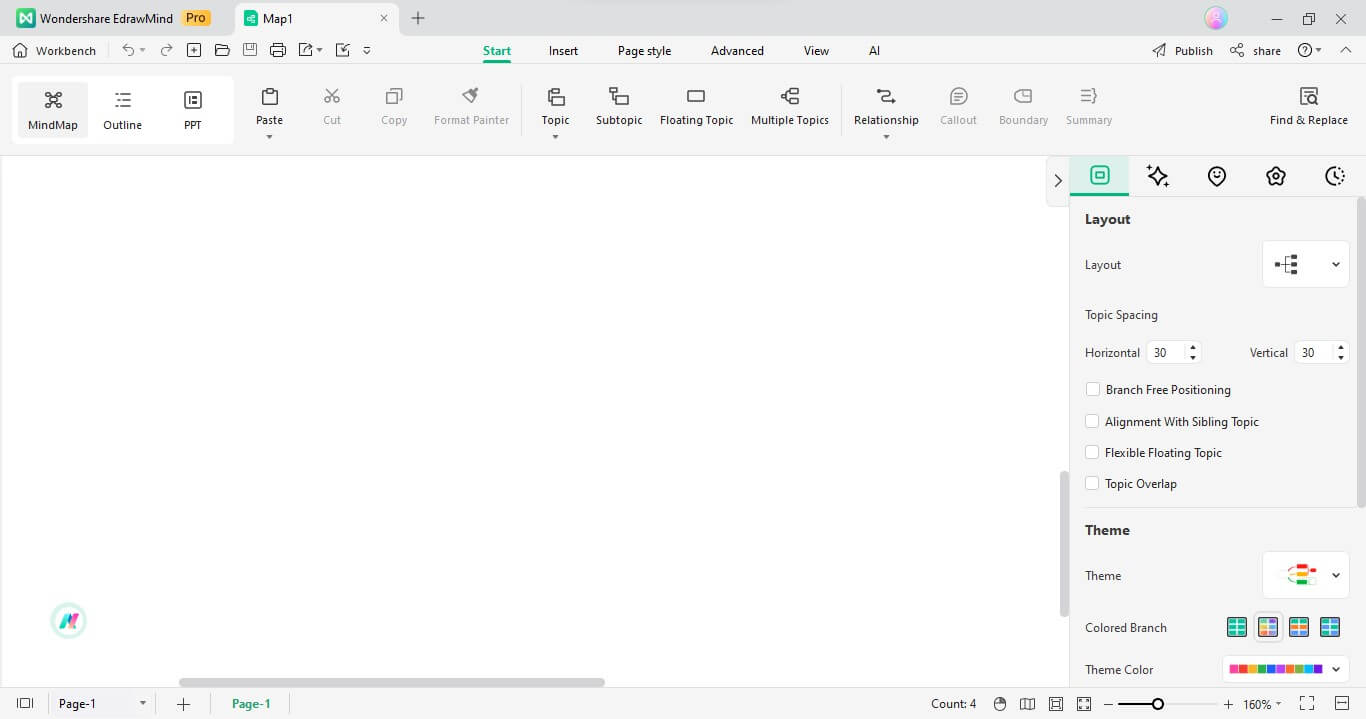
Initiate a new organizational chart project within EdrawMind. Select the "Organizational Chart" template or start from scratch based on your requirements.
Step3Add Organizational Elements
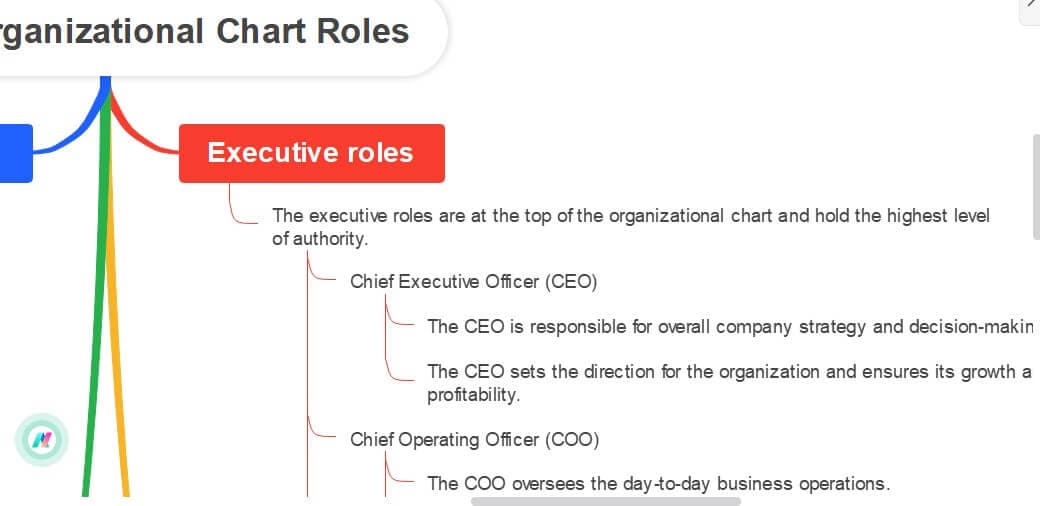
Build your chart by adding key organizational elements such as executives, departments, or teams. Utilize the intuitive drag-and-drop functionality to arrange elements in the desired order.
Step4Customize Elements

Customize each element by adding names, titles, and roles. Explore EdrawMind's extensive styling options to tailor the appearance of elements, ensuring clarity and visual appeal.
Step5Connect Elements
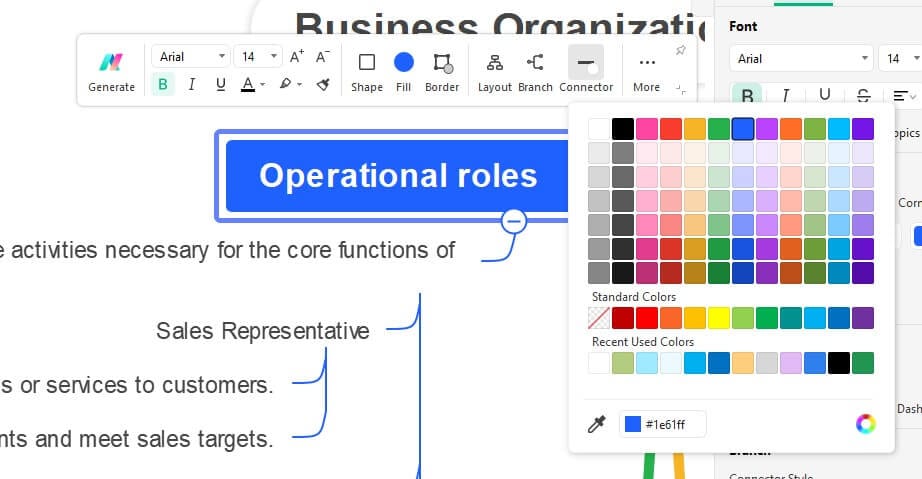
Use connecting lines or hierarchy tools to establish relationships between different elements. EdrawMind's smart connectors automatically adjust, maintaining a clean and organized appearance as you build the structure.
Step6Utilize Customization Options
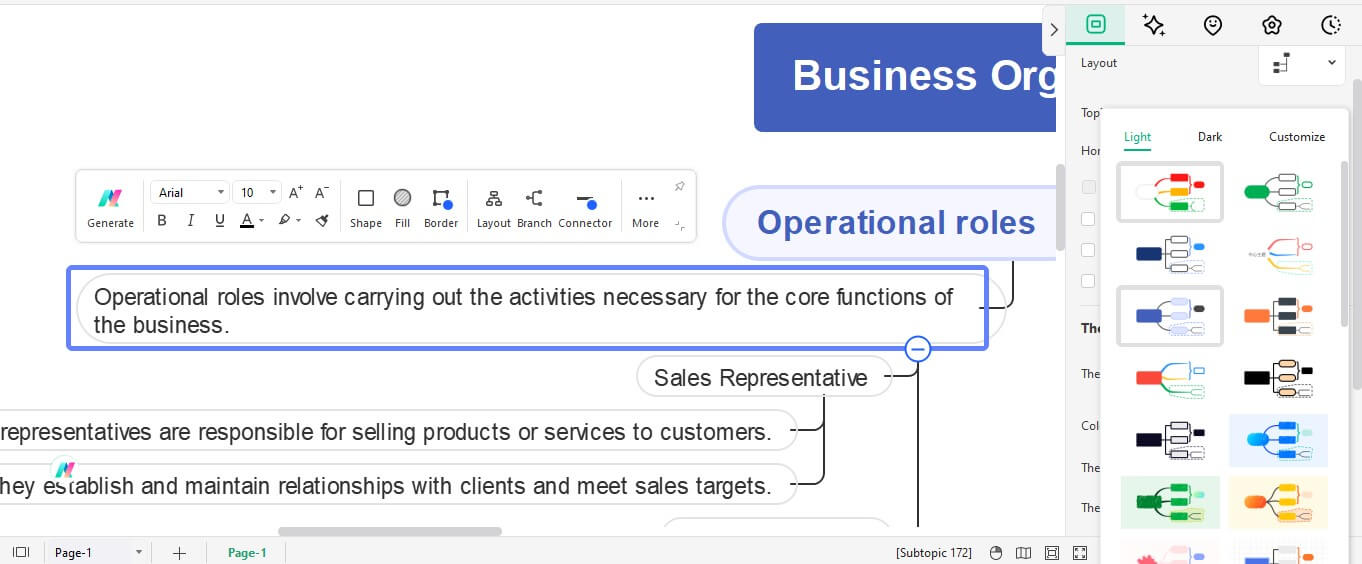
Enhance the example of organizational chart in business by exploring EdrawMind's customization options. Adjust colors, fonts, and styles to align with your organization's branding or emphasize specific chart elements.
Step7Export and Share
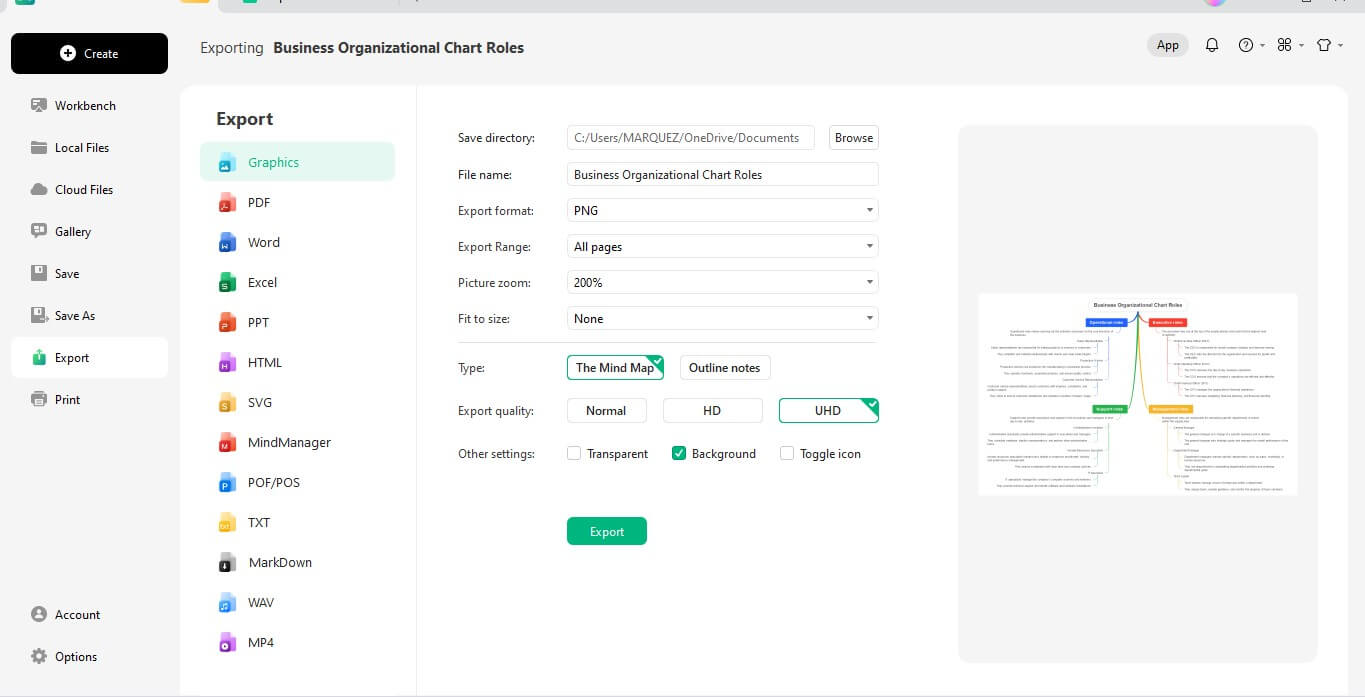
Once your organizational chart is complete, utilize EdrawMind's export features to save your work in PDF or image files. Share the final product seamlessly with colleagues or stakeholders.
By following these step-by-step instructions, users can easily harness the full potential of EdrawMind, creating dynamic and visually appealing business organizational charts. The platform's customization options, collaborative features, and real-time updates collectively contribute to a streamlined and effective chart creation process.
Conclusion
In conclusion, the landscape of effective organizational communication is evolving, and EdrawMind stands as a beacon in this transformative journey. EdrawMind empowers businesses to create, update, and share business organizational charts seamlessly by providing a user-friendly and feature-rich platform. In a world where clarity and transparency are paramount, leveraging advanced tools like EdrawMind becomes a strategic imperative.
Elevate your organizational communication by adopting this innovative tool, ensuring that your business organization chart example represents the structure and become powerful instruments for fostering transparency, collaboration, and success within your organization. Embrace the future of organizational chart design with EdrawMind, where simplicity meets sophistication and communication reaches new heights.




